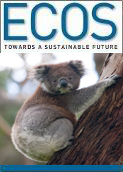
|
Published: 15 April 2013
Rust worth fighting to keep bread on the world’s table
New research show that potential global crop yield losses from wheat stem-rust – a disease that stops grains forming – are unlikely to be as catastrophic as past predictions, but that sustained research investment is needed to ensure crops are resistant to new strains of the disease.

|
|
Wheat stem-rust is one of many fungal diseases that affect wheat and decrease crop quality and yields; others include leaf rust, stripe rust and powdery mildew. Credit:
CSIRO
|
CSIRO’s Dr Darren Kriticos, a co-author of the paper just published in Science, says wheat stem-rust is a solvable problem, but only with sustained investment.
‘In this new study we explored what the impacts would have been to crops worldwide if they had no resistance to the disease then provided guidance on investment needs going forward,’ he said.
‘By our figures, the amount of wheat potentially lost every year around the world would more than satisfy the entire annual calorie deficit of Sub-Saharan Africa’s undernourished population,’ he said.
‘While we found our estimates of potential impact from outbreaks to be a lot lower than other studies, wheat stem-rust is still important for ensuring food security,’ he said.
The authors say that many past estimates were based on assessments of localised and specific incidences of loss, which were extrapolated across the world. These estimates missed factors such as the variability of the occurrence of disease among and within regions and global weather patterns meaning it is very unlikely that all wheat crops would be infected at one time.
By using a probabilistic global model taking account of disease and crop variability, weather patterns and the relatively-comprehensive US loss data they explored scenarios with and without resistant varieties.
‘We found that an annual global investment of just US$51.1 million to develop and maintain stem-rust resistance is justified,’ said Dr Kriticos.
In other words, just 23 cents per hectare is the necessary research investment. For reference, the cost for farmers of purchasing seed alone is approximately $35 per hectare.
‘We are locked in a co-evolutionary arm-wrestle with stem-rust. As rust-resistant wheat breeds are developed, the rust evolves mechanisms to overcome the wheat’s resistance mechanism, and the wheat needs new defences,’ continued Dr Kriticos.
‘The problem for biosecurity is that stem-rust knows no borders; no amount of investment will stop it spreading on the wind. Our only defences are to develop resistant plant material and possibly more cost-effective fungicides.’
Source: CSIRO



